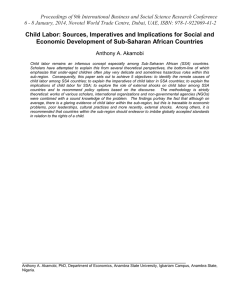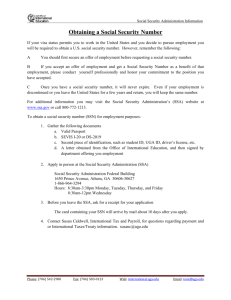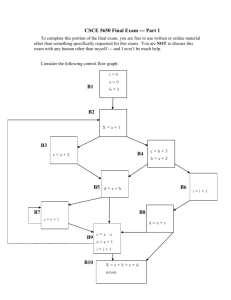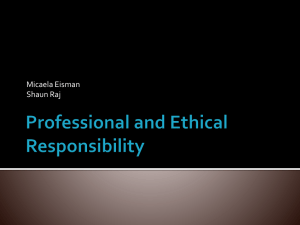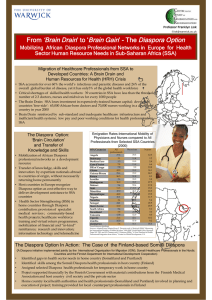Conference on African Transnational Organisations
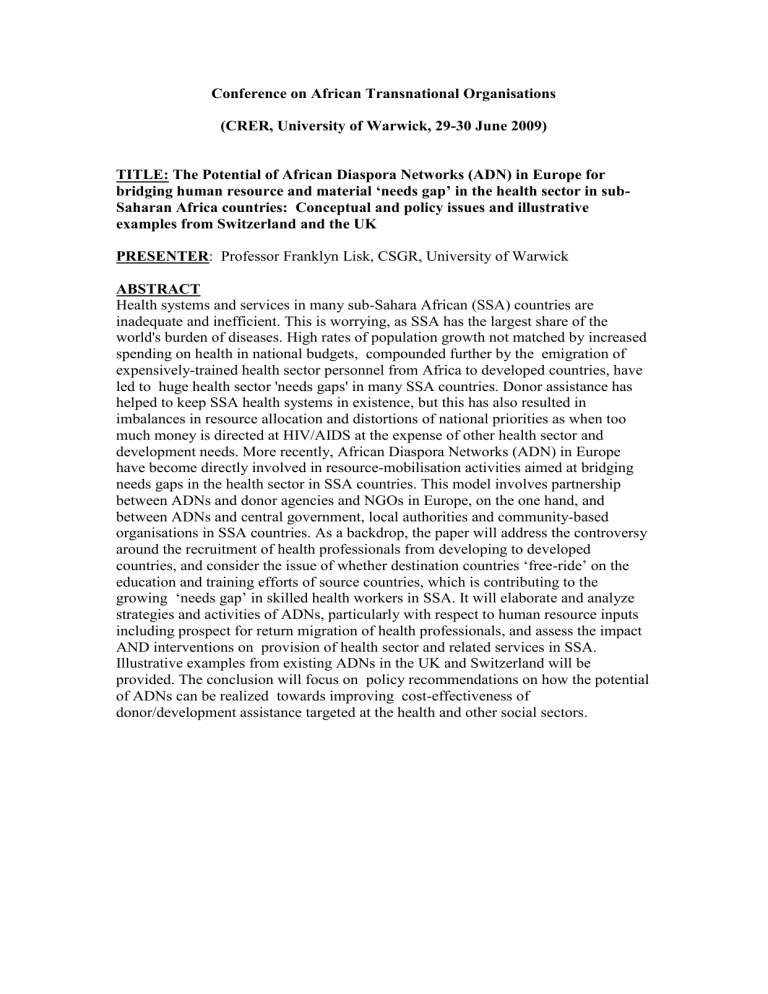
Conference on African Transnational Organisations
(CRER, University of Warwick, 29-30 June 2009)
TITLE: The Potential of African Diaspora Networks (ADN) in Europe for bridging human resource and material ‘needs gap’ in the health sector in sub-
Saharan Africa countries: Conceptual and policy issues and illustrative examples from Switzerland and the UK
PRESENTER : Professor Franklyn Lisk, CSGR, University of Warwick
ABSTRACT
Health systems and services in many sub-Sahara African (SSA) countries are inadequate and inefficient. This is worrying, as SSA has the largest share of the world's burden of diseases. High rates of population growth not matched by increased spending on health in national budgets, compounded further by the emigration of expensively-trained health sector personnel from Africa to developed countries, have led to huge health sector 'needs gaps' in many SSA countries. Donor assistance has helped to keep SSA health systems in existence, but this has also resulted in imbalances in resource allocation and distortions of national priorities as when too much money is directed at HIV/AIDS at the expense of other health sector and development needs. More recently, African Diaspora Networks (ADN) in Europe have become directly involved in resource-mobilisation activities aimed at bridging needs gaps in the health sector in SSA countries. This model involves partnership between ADNs and donor agencies and NGOs in Europe, on the one hand, and between ADNs and central government, local authorities and community-based organisations in SSA countries. As a backdrop, the paper will address the controversy around the recruitment of health professionals from developing to developed countries, and consider the issue of whether destination countries ‘free-ride’ on the education and training efforts of source countries, which is contributing to the growing ‘needs gap’ in skilled health workers in SSA. It will elaborate and analyze strategies and activities of ADNs, particularly with respect to human resource inputs including prospect for return migration of health professionals, and assess the impact
AND interventions on provision of health sector and related services in SSA.
Illustrative examples from existing ADNs in the UK and Switzerland will be provided. The conclusion will focus on policy recommendations on how the potential of ADNs can be realized towards improving cost-effectiveness of donor/development assistance targeted at the health and other social sectors.

